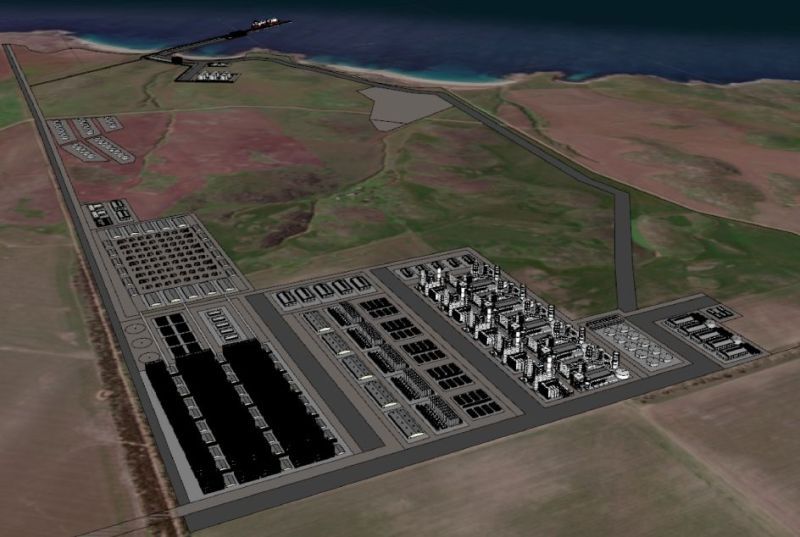Amp Energy and Australian minerals company Iron Road announced they have executed binding transaction documents that pave the way for the development of a green hydrogen and ammonia production facility at Cape Hardy on South Australia’s Eyre Peninsula.
The Cape Hardy Advanced Fuels project, which will provide production at scale with up to 10 GW of planned electrolyser capacity, is being developed within Iron Road’s 1,200-hectare Cape Hardy Industrial Port Precinct near Tumby Bay.
Canada-headquartered Amp said the commercial agreements include the purchase of a 630-hectare parcel of land within the industrial precinct for $15.5 million, as well as finalised royalty structure and common-user infrastructure agreements. Adelaide-headquartered Iron Road is entitled to $22.5 million of payments during project development, and royalties on hydrogen produced at the site capped at $426 million.
The Cape Hardy Advanced Fuels Precinct is planned to start with an initial 1 GW phase of electrolyser capacity followed by incremental stages to reach 10 GW of total capacity. Once fully operational, renewables-based ammonia production is expected to approach 10 million tonnes per annum.
Amp President and co-founder Paul Ezekiel said in addition to green hydrogen and ammonia, the project will allow for the large-scale production of advanced fuels, including methanol, and sustainable aviation fuel.
“We are seeing growing demand for advanced fuels both in Australia and abroad … fuels that will be critical to the energy transition and achieving net zero targets,” he said, adding that it is now “full steam ahead” with the development.
The Cape Hardy Advanced Fuels facility will target both domestic and export markets. To facilitate distribution, the project will be equipped with Australia’s first purpose-built advanced fuels export terminal with Iron Road, which owns a long-life iron ore mining operation at Cape Hardy, developing a deep-sea port facility at the site.
Amp said it has already made significant development progress with the project and is aiming to complete the pre-front end engineering design (FEED) studies for the first 1 GW electrolyser phase over the next nine months.
The company said FEED scoping and contracting is currently underway ahead of awarding the FEED contract in late 2024 or early 2025.
Water for the project is to be sourced from the recently announced Northern Water Supply (NWS) seawater desalination plant that will be located at Cape Hardy.
The federal government earlier this week committed $65 million to partner with the South Australian government and industry to jointly fund a $230 million package of work on the NWS project that would see the construction of a 260 megalitre per day seawater desalination plant at Cape Hardy and approximately 600 kilometres of pipeline to the far north of South Australia.
Early analysis suggests the project has potential to generate more than $5 billion of economic benefit per annum and create 4,000 ongoing jobs in resources and renewables industries.
Amp expects the first 1 GW stage of the Cape Hardy Future Fuels project will create 4,000 direct and 6,000 indirect jobs.
This content is protected by copyright and may not be reused. If you want to cooperate with us and would like to reuse some of our content, please contact: editors@pv-magazine.com.









4 comments
By submitting this form you agree to pv magazine using your data for the purposes of publishing your comment.
Your personal data will only be disclosed or otherwise transmitted to third parties for the purposes of spam filtering or if this is necessary for technical maintenance of the website. Any other transfer to third parties will not take place unless this is justified on the basis of applicable data protection regulations or if pv magazine is legally obliged to do so.
You may revoke this consent at any time with effect for the future, in which case your personal data will be deleted immediately. Otherwise, your data will be deleted if pv magazine has processed your request or the purpose of data storage is fulfilled.
Further information on data privacy can be found in our Data Protection Policy.